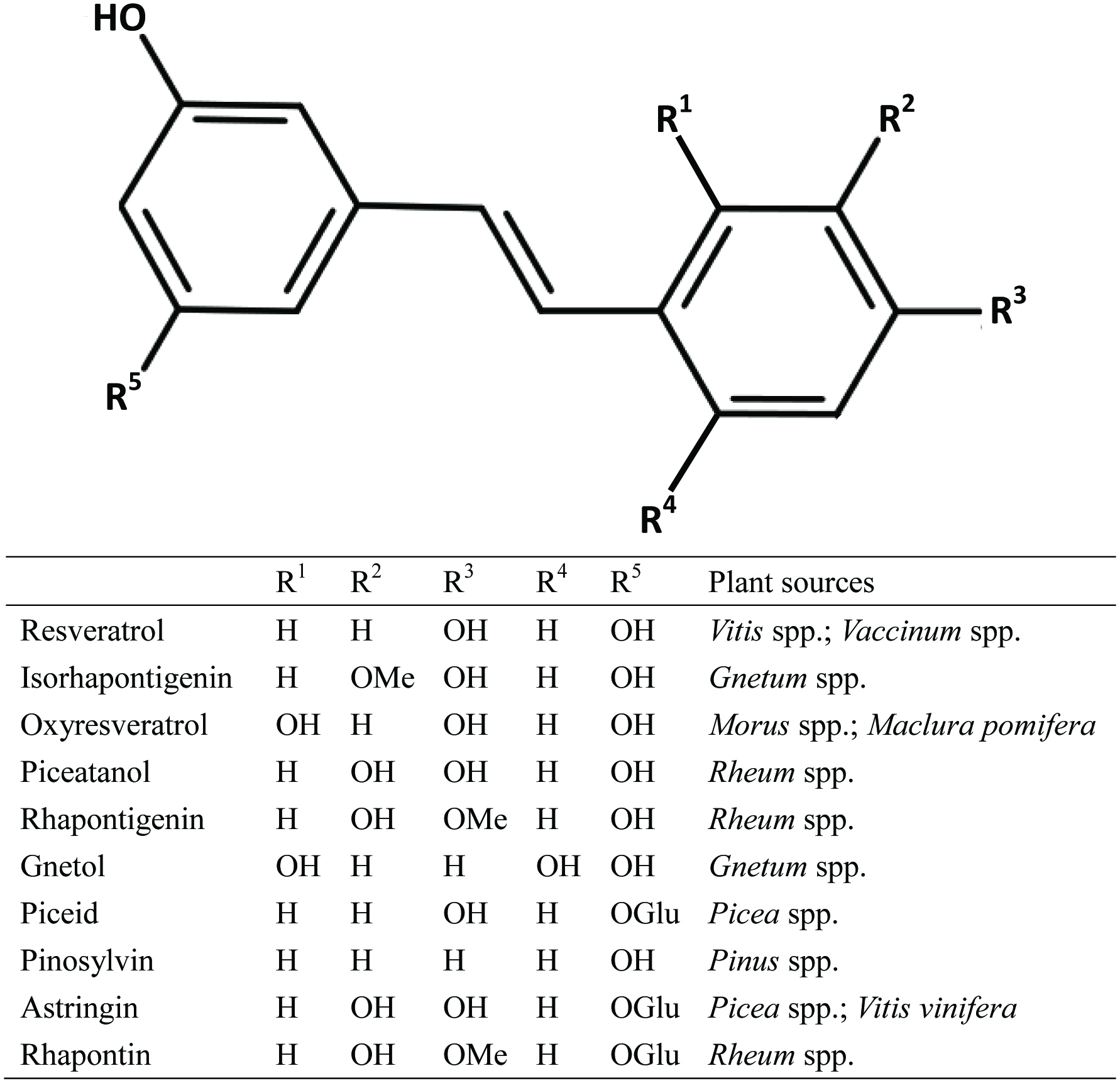
Chemical structures of RES and its natural derivatives/analogues.
| Journal of Food Bioactives, ISSN 2637-8752 print, 2637-8779 online |
| Journal website www.isnff-jfb.com |
Original Research
Volume 1, March 2018, pages 116-123
Oxyresveratrol protective effects against deoxynivalenol-induced intestinal barrier dysfunction and bacterial translocation on porcine intestinal epithelial IPEC-J2 cells
Figures

Chemical structures of RES and its natural derivatives/analogues.
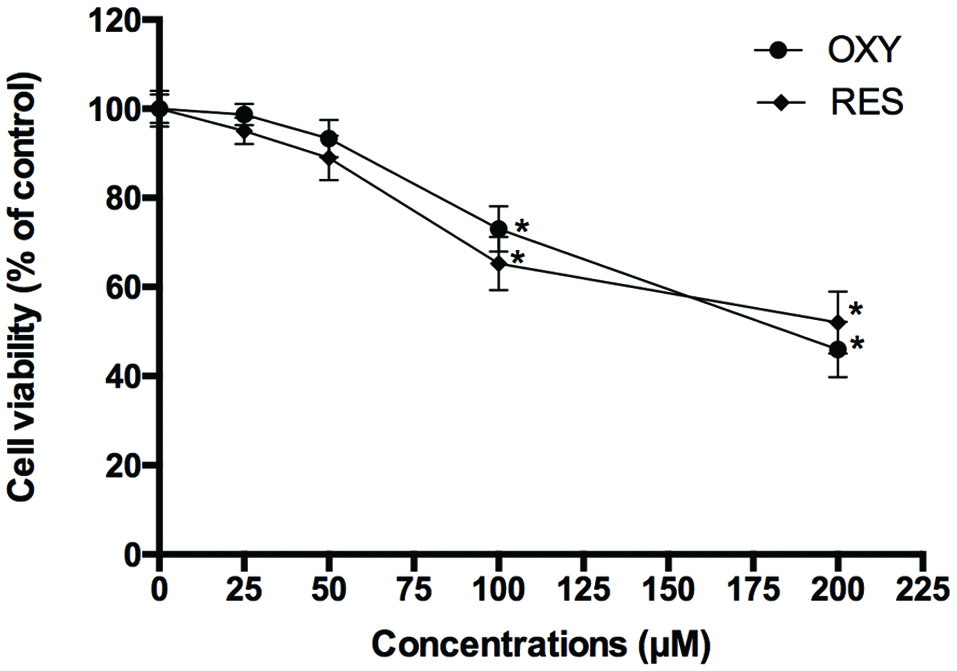
Cytotoxicity of OXY and RES against IPEC-J2 cells.
CCK assay was performed on IPEC-J2 cells after 24 h treatment with increasing concentrations of the stilbenols. Results are presented as percentage of cell viability compared to the control (0 µM OXY/ RES), values are mean ± S.D., n = 4. Asterisks indicate a significant difference compared to the control, P < 0.05.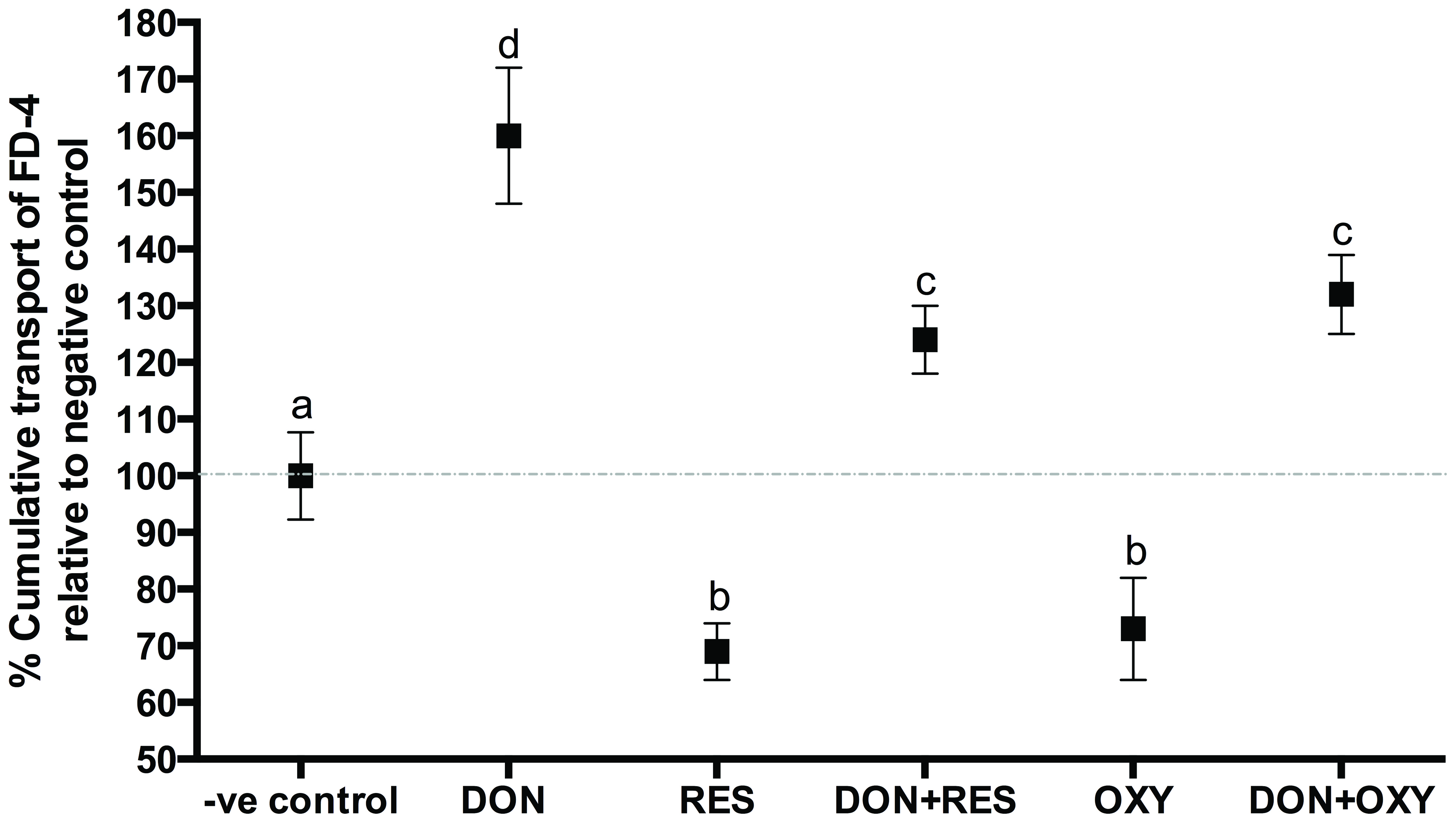
FD-4 diffusion in IPEC-J2 cell monolayers incubated with or without OXY or RES in the presence of absence of DON.
Basal FD-4 level was measured after 12 h. Data are expressed as percentage of FD-4 level relative to the negative control, values are mean ± S.D., n = 6. Different letters indicate significant differences (P < 0.05) after ANOVA and a post hoc Tukey’s multiple comparison test.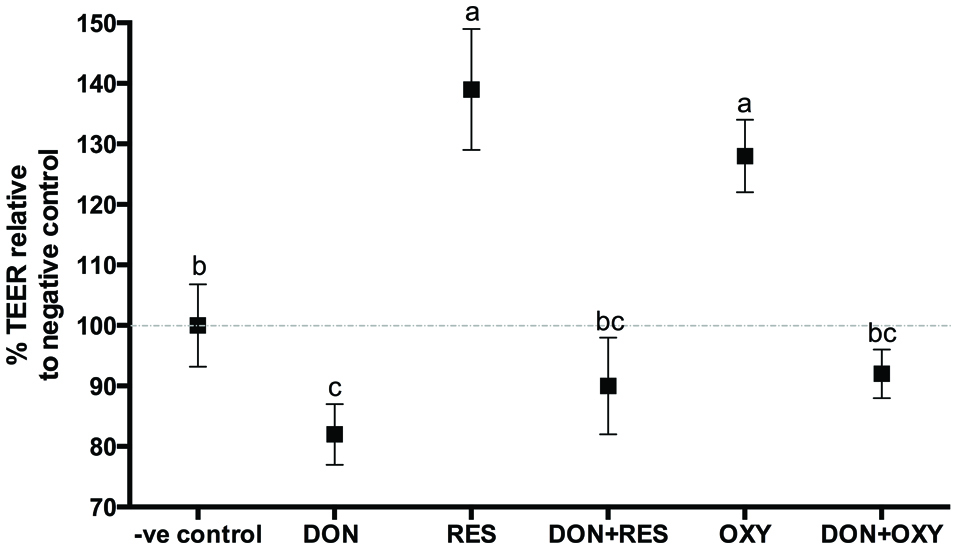
Variation of TEER in IPEC-J2 cell monolayers incubated with or without OXY or RES in the presence or absence of DON.
TEER was measured after 12 h. Data are expressed as percentage of TEER relative to the negative control, values are mean ± S.D., n = 6. Different letters indicate significant differences (P < 0.05) after ANOVA and a post hoc Tukey’s multiple comparison test.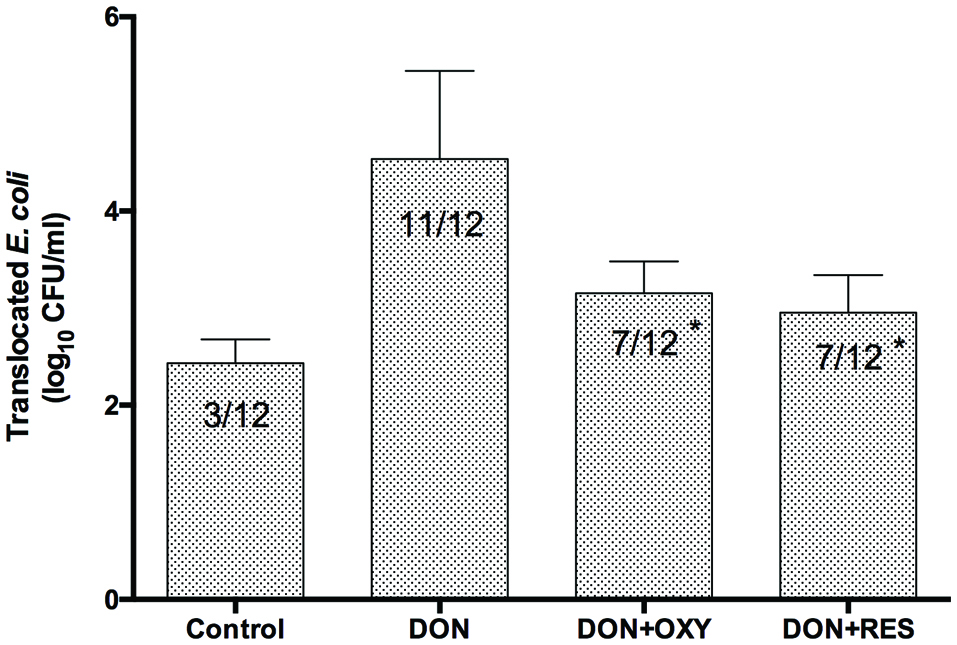
Protective effects of OXY or RES against DON-induced E. coli translocation across IPEC-J2 cell monolayers.
E. coli were added on the apical side and, after 2 h, media from the basal compartment were plated. Data are expressed as number of E. coli determined by plate counting (numbers inside bars indicate number of insert positive for bacterial translocation compared to the total number of epithelial preparations observed). Chi-squared tests were performed to determine the protective effects on bacterial translocation comparing with DON alone treatments, n = 3. Asterisks indicate a significant difference statistically (P < 0.05) and microbiologically (an order of magnitude difference) between treatment with or without OXY or RES in the presence of DON.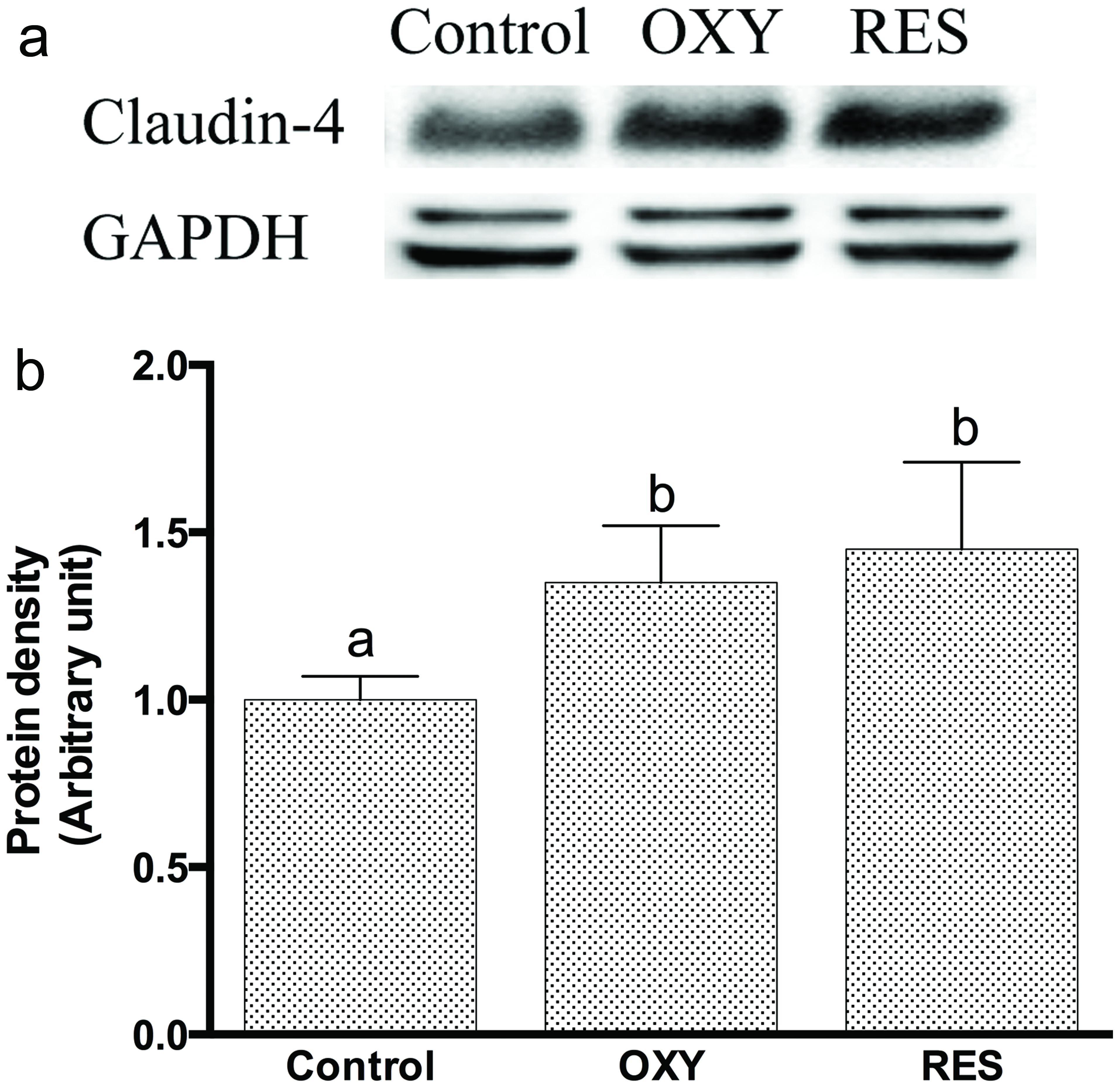
(A) Immunoblot of claudin-4 in the detergent-insoluble fractions incubated with OXY or RES for 12 h. GAPDH acts as protein loading control; (B) Densitometric analyses of immunoblots of CLN-4 in the detergent-insoluble fractions incubated with OXY or RES for 12 h.
The density values were normalized to the negative control after normalization with the loading control (GAPDH). Values are mean ± S.D., n = 4. Means without a common letter differ, P < 0.05.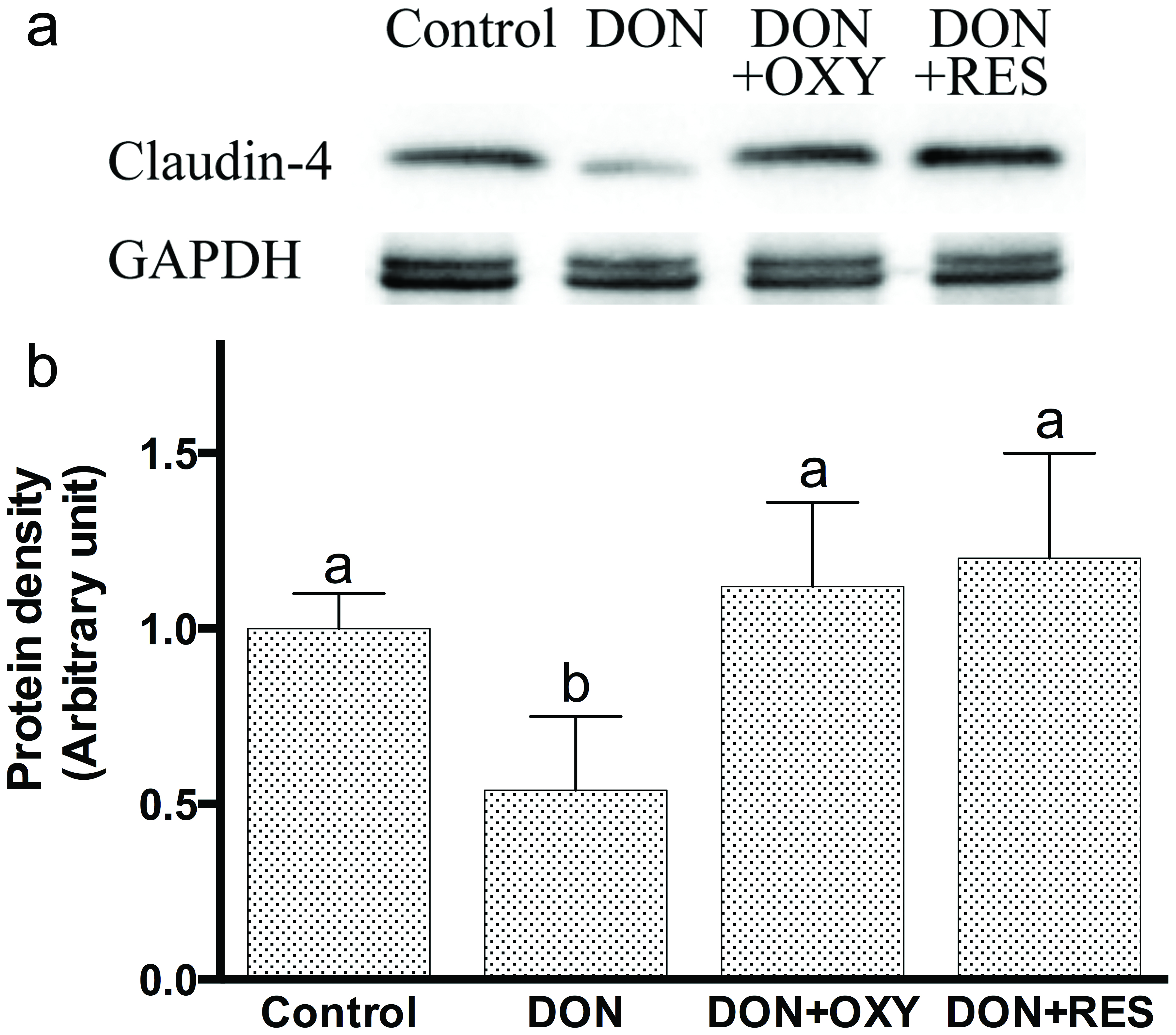
(A) Immunoblot of claudin-4 in the detergent-insoluble fractions incubated with OXY or RES in the presence of DON for 12 h. GAPDH acts as protein loading control; (B) Densitometric analyses of immunoblots of claudin-4 in the detergent-insoluble fractions incubated with OXY or RES in the presence of DON for 12 h.
The density values were normalized to the negative control after normalization with the loading control (GAPDH). Values are mean ± S.D., n = 4. Means without a common letter differ, P < 0.05.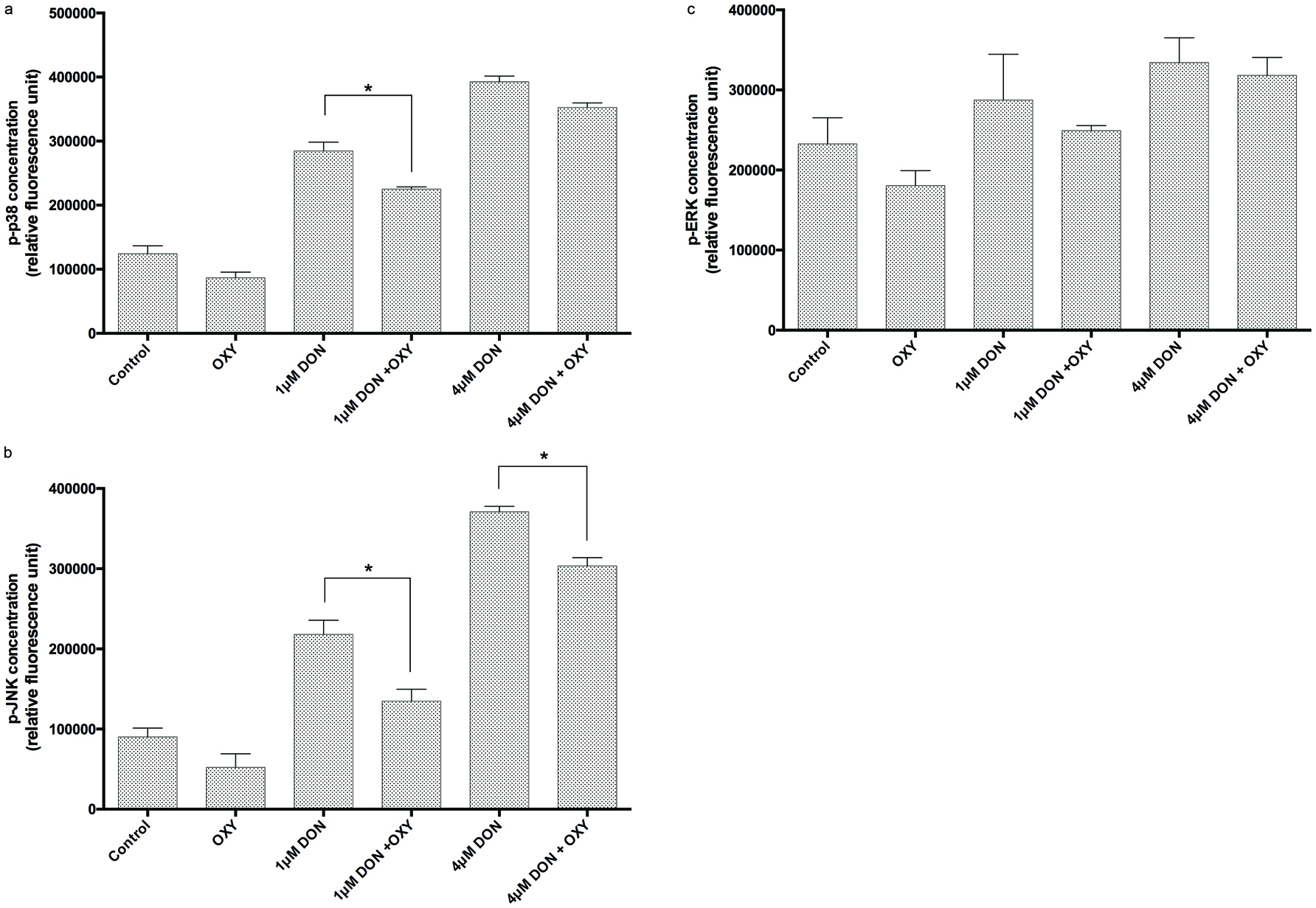
Levels of (A) p38 phosphorylation, (B) JNK phosphorylation and (C) ERK phosphorylation in IPEC-J2 cells treated with or without OXY in the presence of DON.
Proteins were extracted 30 min after DON administration. Data are mean ± S.D. for n = 3 in each group. Asterisk indicates a significant pairwise difference between treatments, P < 0.05.